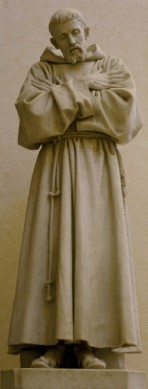I was just thinking of how the language I am seeing in the news about the Motu Proprio is going to reveal a double standard in the the practice of many in the Church.
I noticed there is reference to an "ordinary" form of Mass (the Novus Ordo) and an "extraordinary" form of Mass (the old "Tridentine"). Now based on past experience with something using similar language, we should be encouraged.
There are ordinary ministers of the Eucharist: bishops, priests, and deacons; and there are extra-ordinary ministers of the Eucharist: laity. Now based on the extreme proliferation of extra-ordinary Eucharistic ministers, we should see a generous and vast spreading of the "Tridentine" ritual.
However, if bishops, priests, etc. start to argue that the old rite is "extra-ordinary" most likely you can the ask them why they have so many "extra-ordinary" Eucharistic ministers.
Based on the language, you either have to have a widespread use of the "Tridentine" rite, or you have to scale back the absurd numbers of extra-ordinary Eucharistic ministers. Ideally it is win-win, but sadly, it will probably only reveal the double standard that some priests and bishops just do whatever they want and make things up as they go along.
Sorry to be so crabby. Friday's are just hectic for me. But you should see my point, nonetheless.
RS
Subscribe to:
Post Comments (Atom)






2 comments:
In theory, your reasoning is sound. The problem arises in practice.
Concerning which form of the Roman Rite to use, a parish is already prepared to use the ordinary. Same goes for the administration of communion, but here the resemblance ends. To implement the extraordinary use of the Roman Rite, one must use a different set of books, a different set of rules, a priest with a different set of skills, assisted by laymen with different skills. All this for a group composed largely of those not normally served by this priest or this parish, and in addition to the demands already on his schedule. (Ever wonder why the rectory is the last place to find a priest on Sunday afternoon?)
On the other hand, the extraordinary form of administering communion incurs an abundant supply of "ministers," with little additional effort.
None of this is to suggest that the comparison is fair, or that the use of extraordinary ministers for ordinary circumstances is acceptable. It does suggest how much more easily one can be applied than the other -- again, in practice.
I agree with your analogy with the exta-ordinary ministers of Holy Communion. I had the same thought before I read your blog entry. I think it is a fair position to take however, the excuses for not doing so(using the extraordinary form of Mass) will become quite inventful and interesting to follow if you know what I mean. What about the round parishes without altar rails or for that matter, no altar rails in most parishes? The ordinary method of receiving Holy Communion in the US is standing. Is it possible to receive Holy Communion while standing during the extraordinary expression of the Mass (Tridentine)? If not, should we expect some altar rails being installed in parishes where the extraordinary form will be utilized? Also, what about the hidden tabernacles in some parishes; should we see some of these moved back to the central axis of the individual parishes where the extraordinary form will be used? I suspect that older more traditional types of church buildings will be utilized first. Too bad there were so many ugly church buildings built in the last 30- 40 years. If we simply stuck with tradional church architecture, the implementation of the extraordinary expression of the Mass would be easier in that regard. Of course the priest must know his Latin too - but that's another blog entry...The unfolding of the use of the extraordinary form will be quite interesting...
Post a Comment